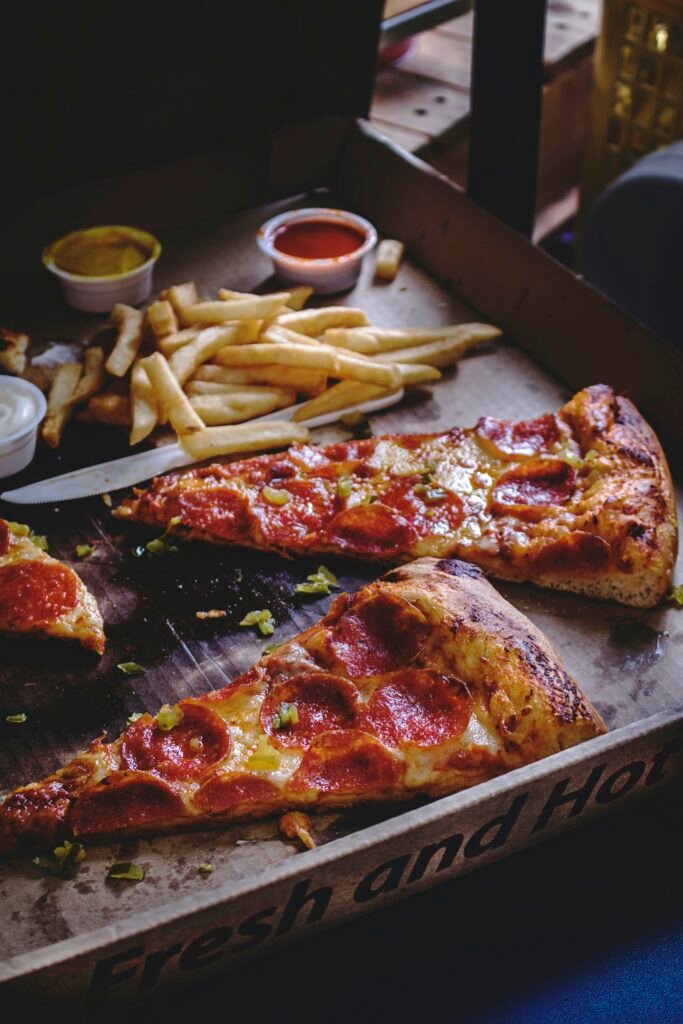If you’ve ever found yourself pondering over the perfect way to achieve that crispy and flavorful pizza crust when grilling, then the question of whether you need a pizza stone might have crossed your mind. Well, wonder no more! In this article, we’ll explore the benefits of using a pizza stone for grilling pizza and why it can make all the difference in achieving that restaurant-quality pie right in the comfort of your own backyard. So, get ready to elevate your grilling game and discover the secret to pizza perfection!

Understanding Grilled Pizza
Grilled pizza is a delicious and unique twist on the classic oven-baked pizza. It involves cooking the pizza dough on a grill instead of in an oven, resulting in a smoky and charred flavor that is hard to replicate. The process of grilling pizza gives it a distinct taste and texture that many pizza enthusiasts enjoy.
Description of grilled pizza
Grilled pizza begins with a traditional pizza dough, which is then cooked directly on the grill grates. The dough is typically brushed with olive oil to prevent sticking and to enhance the flavor. Toppings are added to the dough while it cooks, allowing them to meld together with the heat of the grill. Once the dough is cooked and the toppings are melted and bubbly, the pizza is ready to be enjoyed.
Popular variations of grilled pizza
Grilled pizza offers endless possibilities for creativity and customization. Some popular variations include Margherita pizza, BBQ chicken pizza, and vegetable medley pizza. These variations allow you to experiment with different flavors and toppings, giving you the opportunity to find your favorite combination.
The unique taste and texture of grilled pizza
Grilled pizza has a distinct taste and texture that sets it apart from oven-baked pizza. The dough develops a smoky and charred flavor from the grill, which adds depth to the overall taste of the pizza. The high heat of the grill also creates a crispier crust, giving the pizza a satisfying crunch. The toppings benefit from the heat as well, becoming slightly caramelized and infused with a subtle smokiness.
What is a Pizza Stone?
A pizza stone is an essential tool for grilling pizza. It is a thick, flat slab made from various types of materials, such as ceramic, clay, or cordierite. The purpose of a pizza stone is to provide a consistent cooking surface and to distribute the heat evenly across the pizza, resulting in a perfectly cooked crust.
Explanation of what a pizza stone is
A pizza stone is essentially a slab of material that acts as a heat conductor. When placed in the oven or on a grill, it absorbs and retains the heat, creating a stable and consistent cooking surface. The pizza is placed directly on top of the preheated stone, allowing for even heat distribution and promoting a crispy crust.
How a pizza stone works
A pizza stone works by absorbing and radiating heat evenly throughout the cooking process. It eliminates hot spots and allows the dough to cook evenly, preventing any undercooked or overcooked areas. The porous nature of the stone also helps to absorb excess moisture from the dough, resulting in a crisper and less soggy crust.
Different types of pizza stones
There are several types of pizza stones available on the market, each with its own advantages and disadvantages. Ceramic stones are popular due to their ability to withstand high temperatures and provide excellent heat retention. Cordierite stones are another common option as they are durable and resistant to thermal shock. Clay stones are less common but are known for their ability to produce a perfectly crisp crust.
Advantages of Using a Pizza Stone for Grilling
Using a pizza stone for grilling offers a multitude of advantages that enhance the overall pizza-making experience.
Uniform heat distribution
One of the key benefits of using a pizza stone is its ability to distribute heat evenly. With a preheated stone, the heat is transferred consistently to the dough, resulting in a uniformly cooked pizza. This eliminates the risk of undercooked or burnt areas and ensures that every bite is equally delicious.
Improved texture and flavor
The use of a pizza stone on the grill imparts a unique texture and flavor to the pizza. The high heat of the stone creates a crispy and slightly charred crust, reminiscent of a brick oven pizza. The porous nature of the stone also absorbs excess moisture, preventing a soggy or doughy crust and allowing the flavors of the toppings to shine through.
Crispier crust formation
If you’re a fan of crispy pizza crusts, then a pizza stone is a must-have tool. The stone’s ability to absorb and radiate heat creates the perfect conditions for achieving a crispy crust. The heat is distributed evenly, drying out the surface of the dough and resulting in a beautifully golden and crunchy crust.
Making Pizza on a Grill Without a Stone
While using a pizza stone for grilling is highly recommended, it is possible to make pizza on a grill without one. However, there are some challenges to be aware of and alternative techniques to consider.
Challenges of grilling pizza without a stone
Grilling pizza without a stone can be more challenging due to the lack of even heat distribution. The direct heat from the grill grates can cause the dough to cook unevenly, leading to undercooked or burnt spots. Additionally, without a stone to absorb excess moisture, the crust may become soggy and lose its desired crispness.
Possible techniques
To overcome these challenges, there are some techniques you can try when grilling pizza without a stone. One option is to use a cast iron skillet or a heavy-duty baking sheet as a makeshift stone. Preheating these alternative surfaces before placing the pizza dough on them can help promote even cooking and a crisper crust. Another technique is to grill the pizza indirectly, using the grill’s indirect heat to mimic the effects of a pizza stone.
Comparison of results to pizza made with a stone
While it is possible to make pizza on a grill without a stone, the results may not be as consistent or desirable as when using a stone. Without a stone to distribute heat evenly, there is a greater risk of uneven cooking and a less crispy crust. The toppings may also not have the same caramelization or smoky flavor that comes from cooking directly on a preheated stone.

Choosing the Right Pizza Stone for Grilling
When selecting a pizza stone for grilling, there are a few factors to consider to ensure you make the right choice for your needs.
Designs and materials of pizza stones
Pizza stones come in various designs and materials, each with its own advantages. Ceramic stones are popular for their ability to withstand high temperatures and provide excellent heat retention. Cordierite stones are known for their durability and resistance to thermal shock. Clay stones are less common but are favored for their ability to produce a perfectly crisp crust.
Sizing a pizza stone for your grill
It is essential to choose a pizza stone that fits well on your grill. The stone should cover a significant portion of the grill grates, allowing for even heat distribution across the entire pizza. Measure the dimensions of your grill and choose a stone that fits within those parameters.
Where to buy pizza stones
Pizza stones can be found in various kitchenware stores, specialty cooking stores, or online retailers. It is essential to read reviews and consider the material, design, and sizing options before making a purchase. Popular brands such as Emile Henry, Old Stone, and Weber offer high-quality pizza stones that are suitable for grilling.
How to Use a Pizza Stone for Grilling
Using a pizza stone for grilling is a straightforward process that can elevate your pizza-making skills to the next level.
Preheating your pizza stone
Before placing your pizza on the stone, it is important to preheat it on the grill. This allows the stone to absorb heat and ensures that it reaches the desired temperature for optimal cooking. Preheat your grill, with the stone already inside, to a high temperature (around 500°F) and allow the stone to heat up for at least 30 minutes.
Grilling the pizza on the stone
Once the stone is preheated, carefully transfer your prepared pizza onto the stone. Close the grill lid to retain the heat and cook the pizza for the recommended time, usually around 10-15 minutes. Keep an eye on the pizza and rotate it as needed to ensure even cooking.
Cleaning and maintaining your pizza stone
After grilling, it is important to clean and maintain your pizza stone to prolong its lifespan and ensure its effectiveness. Allow the stone to cool completely before cleaning. Avoid using soap or other strong cleaning agents, as these can be absorbed into the porous stone and affect the flavor of future pizzas. Instead, gently scrape off any residue with a spatula or brush and wipe with a damp cloth if necessary.

Comparing Pizza Stones with Other Baking Equipment
While pizza stones are a popular choice for grilling pizza, there are other baking equipment options that can yield similar results.
Pizza stones vs pizza steel
Pizza steel is an alternative to a pizza stone that has gained popularity in recent years. It is a thick slab of steel that heats up quickly and retains heat even better than a stone. Pizza steel creates a similar effect to a stone, producing a crispy crust and evenly cooked pizza. However, it can be more expensive and harder to find compared to pizza stones.
Pizza stones vs cast iron
Cast iron pans and skillets can also be used for grilling pizza, especially if you don’t have a pizza stone. Cast iron retains heat well and distributes it evenly, which can result in a deliciously crispy crust. However, the shape of the pan may limit the size and shape of the pizza you can make.
Pizza stones vs baking sheets
A baking sheet can be used as a makeshift pizza stone, although it may not provide the same level of heat distribution. Baking sheets are typically not designed to withstand the high temperatures required for grilling pizza and may not produce as crispy of a crust. However, they can still be a viable option if a stone or other equipment is not available.
Practical Tips for Grilling Pizza with a Stone
To ensure success when grilling pizza with a stone, here are some practical tips to keep in mind.
Dealing with sticky dough
If your pizza dough is sticking to the stone, make sure to brush the surface of the stone with olive oil or dust it with flour before placing the dough. This will create a barrier between the dough and the stone, preventing sticking and ensuring an easy release.
Getting the right temperature
Preheating your pizza stone to the correct temperature is crucial for achieving the desired results. Use a reliable oven thermometer to ensure that the stone reaches the recommended temperature, usually around 500°F, before placing the pizza on it. This will ensure even cooking and a crisp crust.
Ensuring even cooking
To ensure even cooking of your pizza, rotate it periodically during the grilling process. This will help prevent any hot spots on the grill or any uneven heat distribution. Keep a close eye on the pizza, and adjust the cooking time as needed to achieve the desired level of doneness.
Alternative Tools for Grilling Pizza
If you don’t have a pizza stone or other specialized equipment, there are alternative tools you can use to grill pizza.
When you don’t have a pizza stone
If you don’t have a pizza stone, you can still grill pizza directly on the grill grates. Make sure to oil the grates before placing the dough directly on them. This method may result in a less crispy crust but can still produce a flavorful grilled pizza.
Using a Grill Pan
A grill pan is an excellent alternative to a pizza stone, especially for individuals who prefer a deep-dish style pizza. Preheat the grill pan on the grill and then add the dough and toppings. The pan will help distribute heat evenly and produce a deliciously crispy crust.
Using a Cast Iron Skillet
A cast iron skillet can also be used for grilling pizza. Preheat the skillet on the grill and then transfer the prepared dough into it. The thick base of the skillet will help generate heat and create a crispy crust. However, keep in mind that the shape of the skillet may limit the size and shape of the pizza.
Conclusion: Do You Need a Pizza Stone for Grilling
While using a pizza stone for grilling pizza is not strictly necessary, it offers numerous advantages that can enhance your pizza-making experience. The uniform heat distribution, improved texture and flavor, and crispier crust formation achieved with a pizza stone are hard to replicate with other equipment. However, if you don’t have a pizza stone, there are alternative methods and tools you can use to grill delicious pizzas. Considering the alternatives and your preferences, it is up to you to decide if investing in a pizza stone is the right choice for you.

